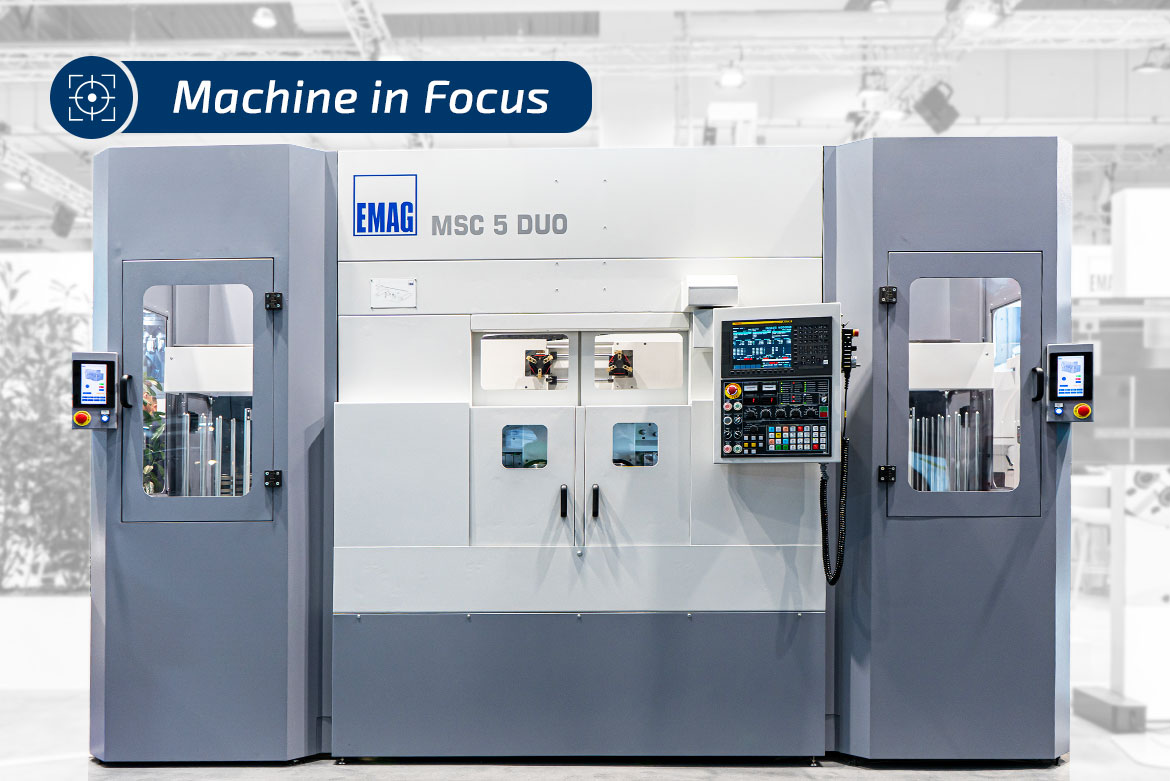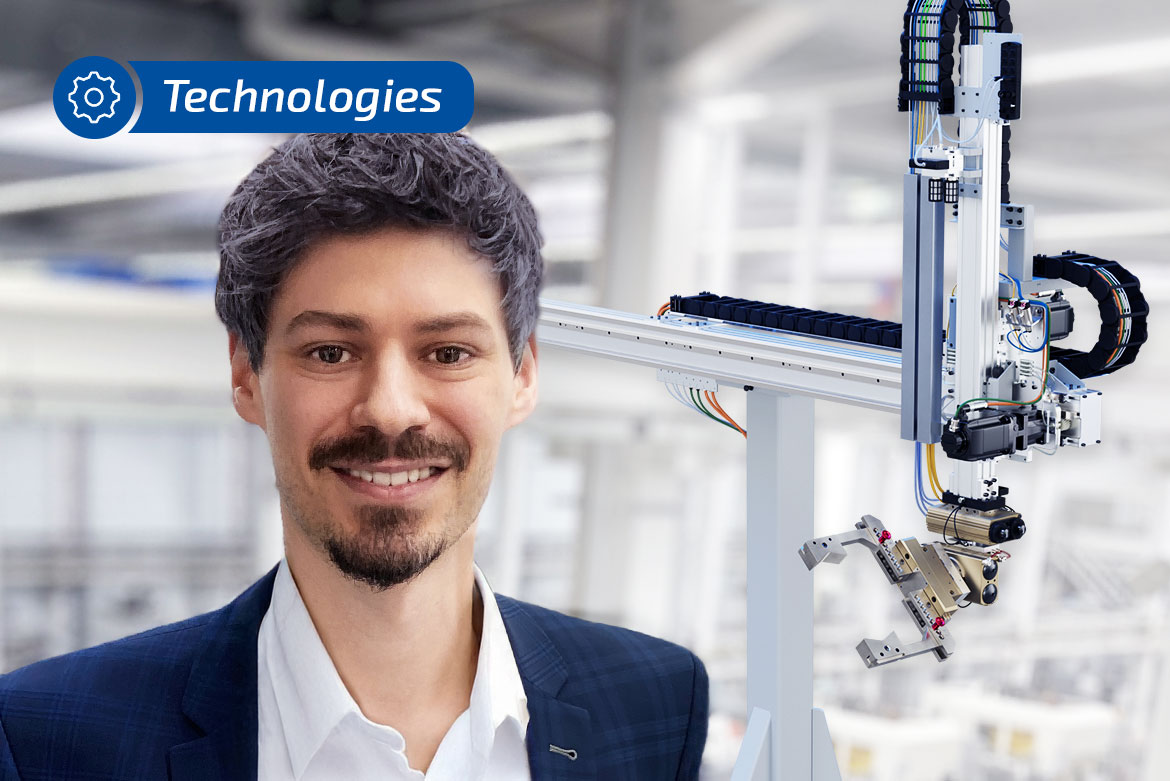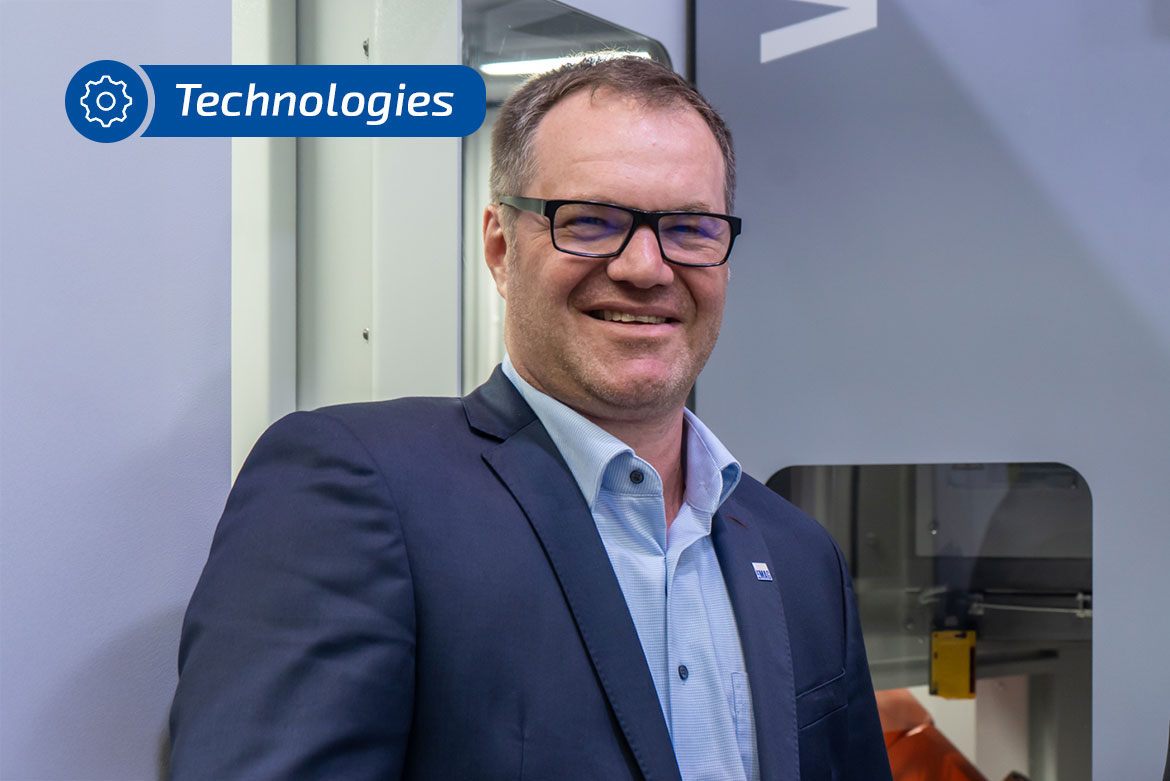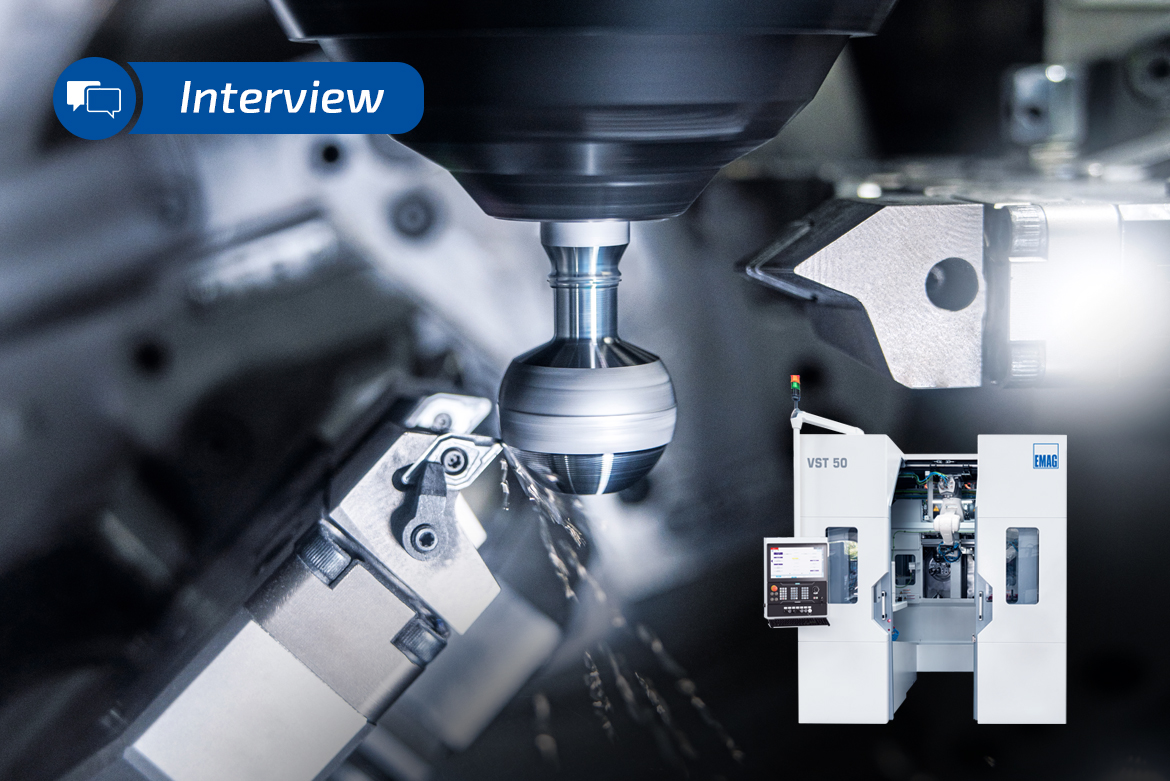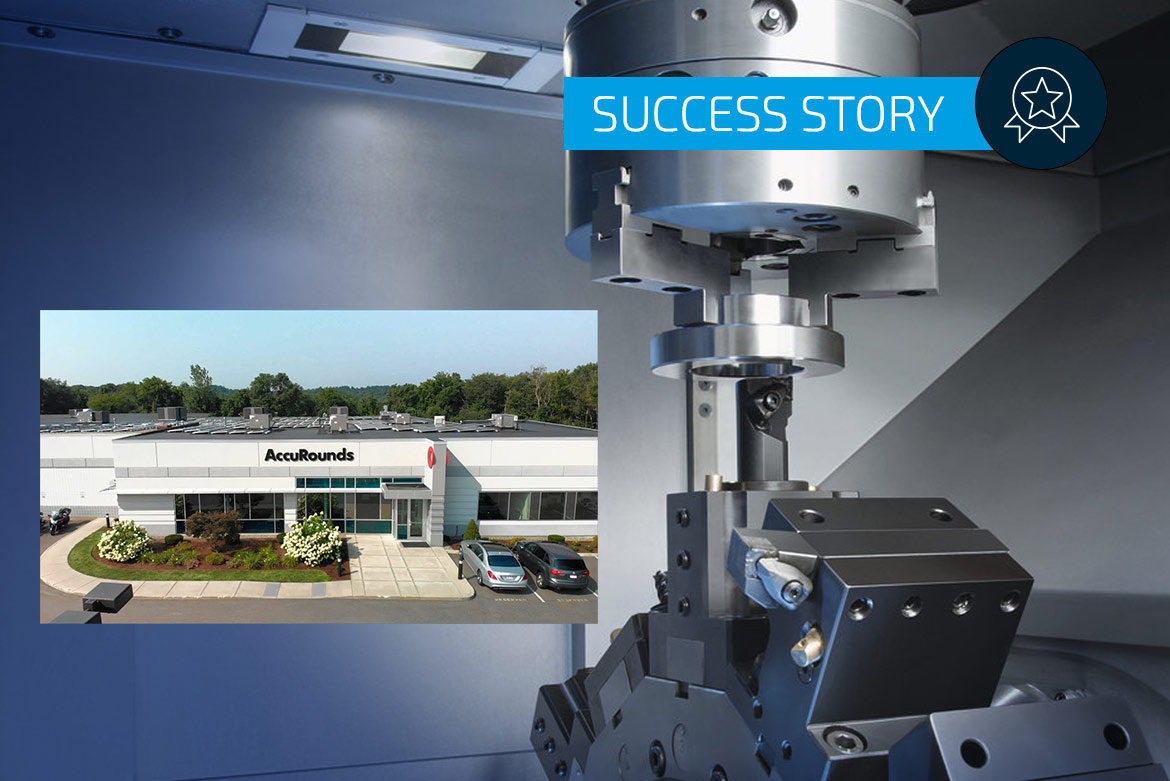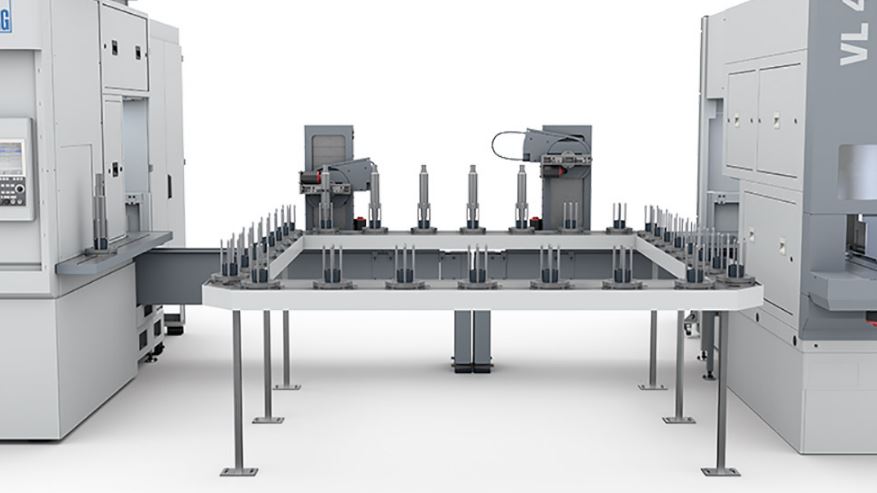The automated production of turned parts in medium and large batch production requires CNC turning machines that combine productivity, process reliability and cost-effectiveness. The MSC 5 DUO from EMAG’s Classic series addresses these requirements with a machine configuration consistently designed for automation. As a fully automated CNC lathe with a double-spindle concept, the machine is positioned in the compact manufacturing cell segment for workpieces up to 120 mm in diameter and 85 mm in length.
automation
Turning balls, especially in safety-critical areas such as the automotive industry, places the highest demands on precision, repeatability and cycle time. Components such as ball pins in ball joints play a central role in steering and chassis. Their production requires state-of-the-art turning technology – especially when it comes to large quantities and economical processes.
Since its founding 60 years ago, PENN GmbH has grown from a small forge into an internationally active specialist in sophisticated metal processing. In this interview, Managing Director Gernot Penn shares insights into the company’s development, its production processes and its cooperation with machine manufacturer EMAG.
EMAG is known for its wide range of manufacturing technologies. At the same time, more turnkey manufacturing systems are now possible thanks to the design and development of automated solutions. Examples include palletizing or stacking cells with integrated robots, such as the recently introduced CRC stacking cell, the MRC bin-picking automation for bulk goods, the SCS 4 basket stacking cell and many more. We conducted an interview with Johannes Mauz, Head of Engineering Automation & Robotics at EMAG, about the possibilities that EMAG offers in the field of automation.
Vertical pick-up turning machines are indispensable in modern manufacturing. These machines often produce in three-shift operation and are already highly optimized for specific production requirements. But how can additional increases in performance be achieved with such highly developed manufacturing systems? Jürgen Maier, Head of the Turning Business Unit at EMAG, deals with this question. In the following interview, you will learn how productivity can be further increased by direct loading into the work spindle of a vertical turning machine using a robot.
“Our customers are faced with the task of manufacturing complex components to the highest quality and in the shortest possible time. As a product manager, I support them in optimizing their production processes. With our new robot cells, we offer tailor-made solutions that not only increase productivity, but also improve working conditions. For us, automation is not just about technology, but about looking at the entire value chain.” Jan Gotthold, Product Manager in the EDNA Automation team, gives insight into the new robot cells from EMAG. In the following interview he explains why they offer real added value for many applications.
With the new VST 50 machine, EMAG is for the first time tackling a task that is as special as it is demanding: the machining of ball pins and ball sleeves. In the steering or suspension of cars, for example, these components are indispensable. What are the details of the VST 50 and how can extreme chip-to-chip times of less than two seconds be achieved in this field? Read more about this challenge in our conversation with Dr. Mathias Klein, CSO of the EMAG Group.
In the world of high precision drives, Zoerkler is a name synonymous with innovation, quality and technical excellence. In its almost 120-year history, the company has developed from a modest mechanical engineers’ workshop into a leading supplier of drive systems for the automotive and aviation industries. In this interview, Managing Director Bernhard Wagner provides insights into the fascinating world of precision manufacturing, innovative production technologies and the future visions of Zoerkler Gears GmbH & Co KG.
When the conversation turns to the topic of sustainability, most would assume green manufacturing and environmental protection will be the focus of the discussion. It’s part of the chat, Michael Tamasi, President and CEO of AccuRounds, argues, but to him and his company the term means much, much more. Yes, they’ve added solar panels to lower the plant’s carbon footprint; however, Michael knew building a company that will last involves attracting, developing and keeping talented staff. Retaining good employees also requires nurturing a creative and caring culture, and of course, operating a profitable business that provides long-term financial security as well as a good wage.
A continued rise in the demand for customized systems and integrated solutions was predicted back in 2014 by a survey of German manufacturers of plant and machinery, in a study on the future perspectives for the industry in Germany. This is not surprising given the huge “Industry 4.0” trend, as extensive automation in the form of customer-specific system solutions is a fundamental prerequisite for the digitalization of production facilities. The machines used then form an integrated system that production planners can control from a central point. Moreover, many companies need to respond ever more quickly and flexibly to technological developments. Numerous different versions of parts and fluctuating unit volumes are typical for small and medium-sized production companies in the automotive industry.
- 1
- 2
